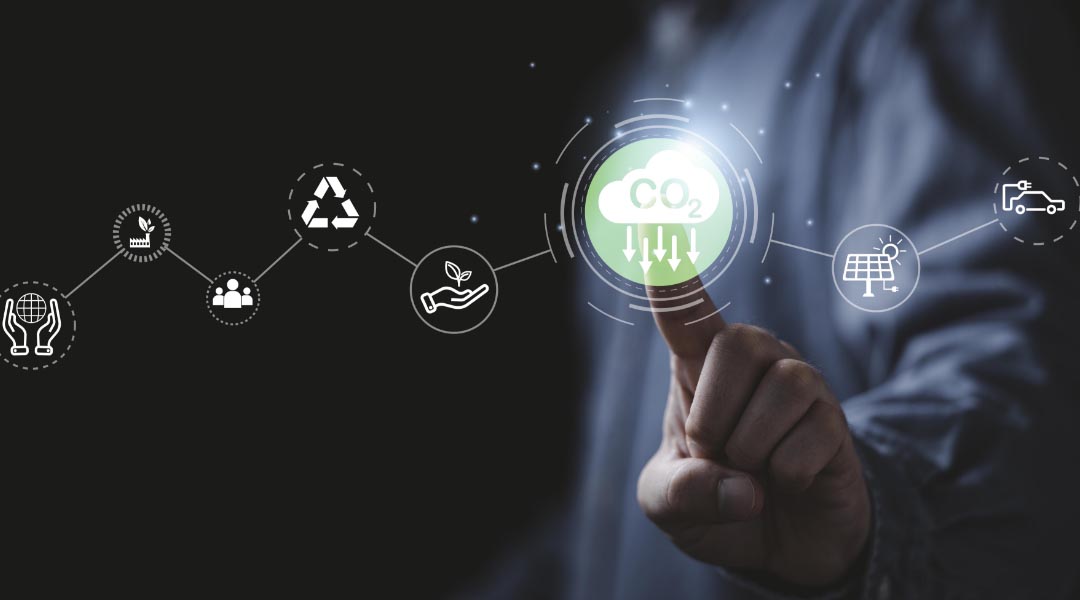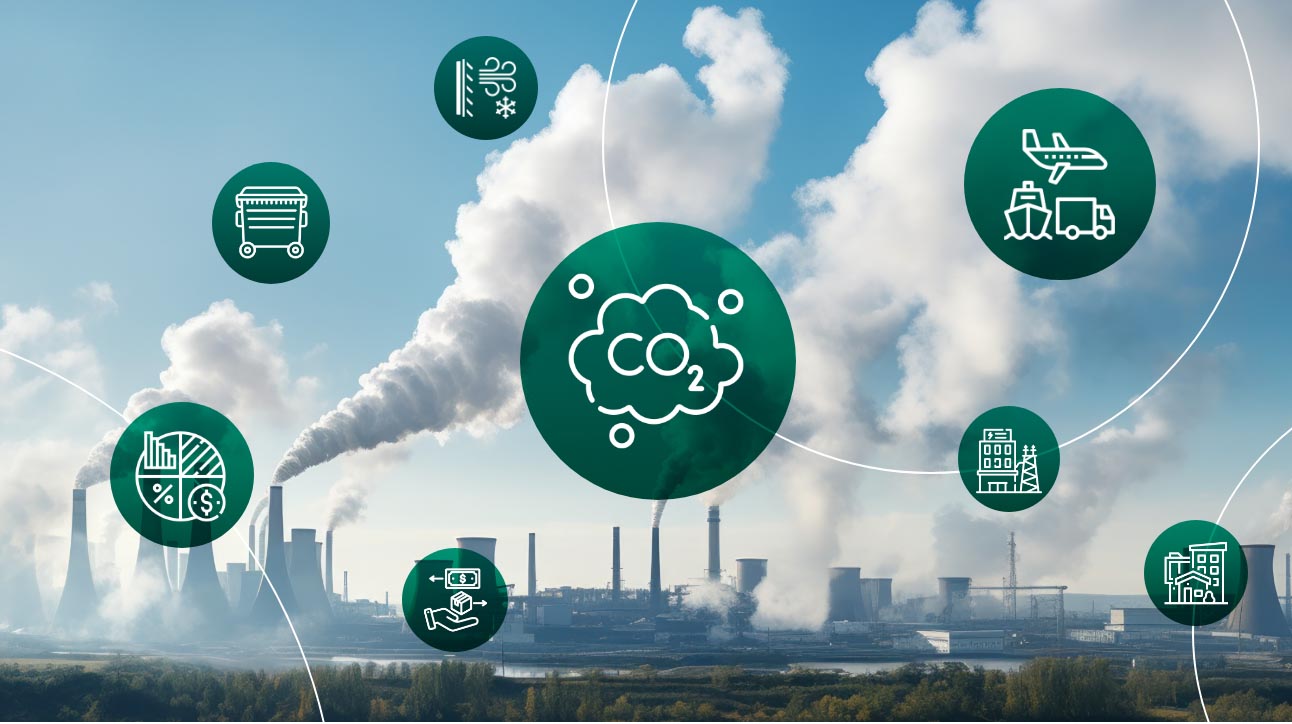The 2015 Paris Agreement required signatories to limit global temperatures to within 2°C above pre-industrial levels by 2050. As a result, companies are turning to decarbonisation to achieve a larger impact on their sustainability efforts. Decarbonisation covers any effort to minimise carbon emissions in the commercial or industrial sectors.
Establishing one or more decarbonisation goals is only the first step, however. The challenge lies in creating effective, flexible strategies to achieve those goals. This is followed by monitoring your progress and incorporating the latest recommendations and scientific data in your operations. Dive into the guide below to begin your process of creating a more sustainable company.
The Journey Towards Net-Zero: Decarbonisation
What is Decarbonisation and Why Does It Matter?
Decarbonisation refers to any effort with the ultimate goal of reducing the carbon dioxide (CO2) emissions generated by a country, region, or individual company or organisation.
Carbon dioxide emissions are the root cause of most of the effects of global warming and climate change in general. Decarbonisation is one of the most effective, achievable ways to meet the goal of the Paris Agreement and minimise climate change.
Key Sectors to Decarbonise
Many of the most carbon-heavy industrial and commercial sectors produce a wide array of essential modern technologies, commodities, and services. Here are a few of the most frequently-discussed sectors in need of decarbonisation.
Oil and Gas
The conventional energy sector may be one of the most challenging to decarbonise. However, many oil and gas companies aim to reduce and offset emissions and are also investing in renewable energy technologies.
Steel
The steel industry generates 7% of the global energy sector CO2 emissions. That, along with the presence of steel in nearly every economic sector, is driving rising interest in green steelmaking processes using renewable energy and less carbon.
Transportation
Currently, aviation, shipping, and freight transport account for anywhere from 20 to 25% of global carbon emissions. Passenger travel accounts for 45% of that figure, which is why an increasing number of auto manufacturers are focusing their efforts on producing more electric or low-emissions vehicles. Transport decarbonisation plans may include features such as more sustainable fuels and alternative propulsion technologies.
Other Sectors
An industrial decarbonisation strategy can also benefit a wide range of additional economic sectors, from agriculture and food processing to mining, construction, and finance. These industries are investigating more sustainable, low-carbon technologies, fuels, and processes to help organisations in these fields achieve their emissions targets.
How to Achieve Decarbonisation Goals and Targets

Processes to effectively decarbonise will vary according to the sector in which an organisation operates, its size, and its jurisdiction. Most decarbonisation strategies consist of these several basic steps:
1. Measure Your Carbon Footprint
Before you can establish any decarbonisation goals, it’s necessary to assess your organisation’s total carbon footprint. Carbon footprint calculators offer a cost-effective, reliable solution for estimating your company’s total scope 1, 2, and 3 emissions. With this data, you’ll have a holistic view of your carbon emissions to act on.
2. Define Goals and Indicators
Estimates of an organisation’s total carbon output can be used to set achievable decarbonisation goals with built-in targets to monitor progress along the way. One option is to choose science-based targets or those which take into account the latest climate science.
Alternatively, smaller organisations may choose more accessible targets, such as installing LED lights in all owned or managed facilities, expanding company-wide recycling policies, encouraging employees to make use of mass transit, or investing in low-emissions vehicles and equipment.
3. Engage Employees
Much of the actual work of reducing emissions occur during day-to-day operations, which is why it’s critical to engage employees from the earliest stages of a decarbonisation strategy. Schedule training and provide resources to help your team understand important terms such as “decarbonisation,” “carbon neutrality,” “net-zero,” and “carbon offsetting.”
Explain why these matter and why company leaders have set carbon-reduction targets. A reliable way to engage employees in your plans is to invite feedback on the effectiveness of existing goals and suggestions for improvement.
4. Include Stakeholders
For decarbonisation to be truly effective, it’s necessary to have a wide array of stakeholders engaged in the effort. Encourage partnered companies to adopt decarbonisation strategies of their own, if possible, to further reduce their carbon footprint impact throughout supply and value chains.
5. Monitor and Report on Your Progress
Finally, use digital resources such as carbon calculators and ESG monitoring and reporting software to track your progress toward achieving your decarbonisation goals. Doing so will give leaders up-to-date insights into how their plans are advancing as well as an early warning of any faults in their efforts. Furthermore, keeping track of carbon-reduction projects and similar programs will simplify the process of reporting on ESG performance.
Maximise Your Decarbonisation Potential Through Convene ESG and Convene 2zero

Reliable, innovative technology is at the heart of any effective decarbonisation strategy. Build a comprehensive knowledge base with Convene 2zero, a carbon footprint calculator which offers precise breakdowns of various carbon emissions with local, national, and global factors taken into account. Then, design your strategy and monitor results with Convene ESG, a full-service ESG reporting platform. It’s designed to track carbon emissions and other critical factors to generate detailed reports in line with a wide range of ESG reporting standards and frameworks.
Ready to find out more? Then check out the many valuable features offered by both Convene 2zero and Convene ESG to aid your decarbonisation strategy.














